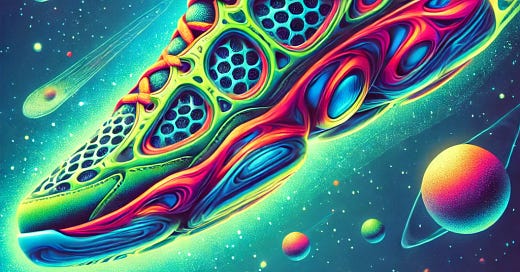The Portland Art Museum currently has a special exhibit called Future Now, about the future of sneakers. Despite billboards saying something in my own city promised a window into the future, I was reluctant, mostly because I don't really get sneakers. I've never collected them (or really understood the appeal of doing so), I don't really care what they look like, and I certainly don't care who endorsed them or deposited blood into them. I own a single pair at a time, and I barely even wear them. Also, what does an exhibit about the future of sneakers even mean? However, I decided to have an open mind1 and I went to the exhibit last weekend.
The early rooms were not reassuring. The first one was about understanding the anatomy of a sneaker and the different cool ways you can lace them — I get that we want a baseline of understanding, but this really didn’t do anything for me. The second room was full of sneakers from the Doernbecher/Nike collaborative fundraiser, where sick kids design sneakers and then there’s a big auction and the money goes to the children’s hospital. This was kind of neat and I had never heard about the collaboration, and technically children are our future, but it wasn’t very on theme. That room also had little kiosks where people could design their own sneakers (shapes of elements, fabric, color), but it didn’t lead to anything and it wasn’t that different from things I was doing as a kid in museums in the 90s. There was also a room about the history of shoemaking technology, so we officially went in the wrong temporal direction; the two parts I thought were interesting were the way images of the future relative to space exploration influenced the design of go-go boots, and a reminder of the only time in my life I’ve ever felt like sneakers were my ticket to the future: Reebok Pumps.
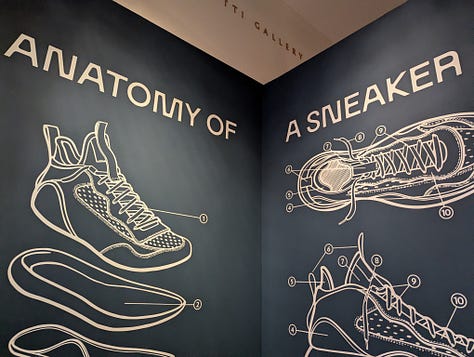
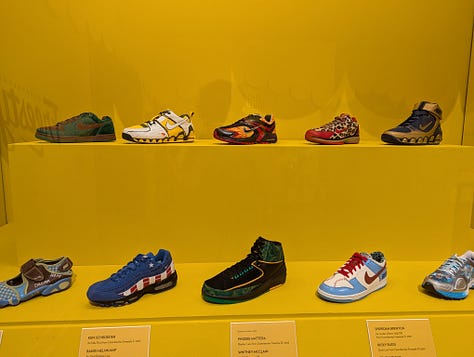
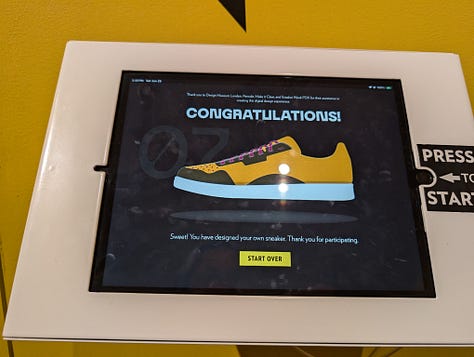
We hit what I thought was the main room, full of sneakers that had been designed with a futuristic aesthetic. There’s only so many variations on aerodynamic/weirdly organic designs you can make before they all bleed together. Also, even in a world where Crocs are the future of footwear2, it won’t be one where you install little charms in the holes to make an artistic statement (especially not one that connects the two shoes and makes it impossible to walk). They also had a pair of the MSCHF Big Red Boots, which are more cartoon than future.

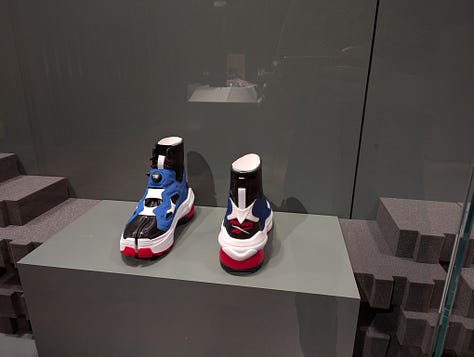
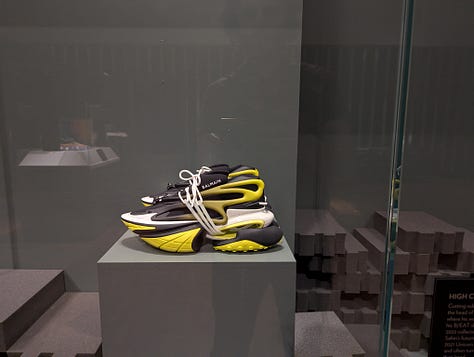

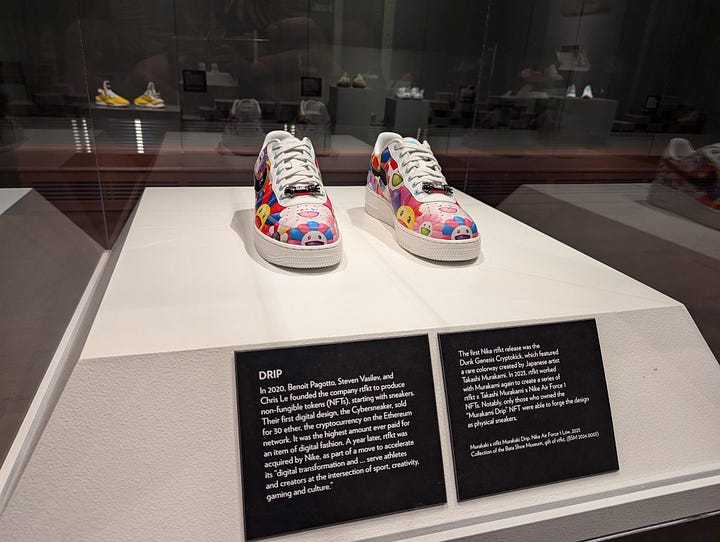
There was a little side room about footwear used with Virtual/Augmented Reality: shoes you can try on in AR via QR code, or complicated shoes on rollers that give you the feeling of walking in a VR world without risking bumping into furniture or walls in the real world. Not sneakers, but I can see how footwear interacts with these technologies. Solid B- room.
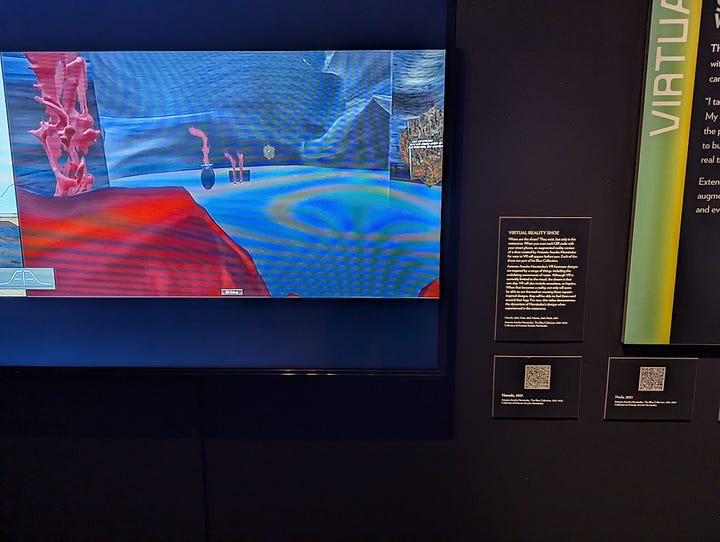
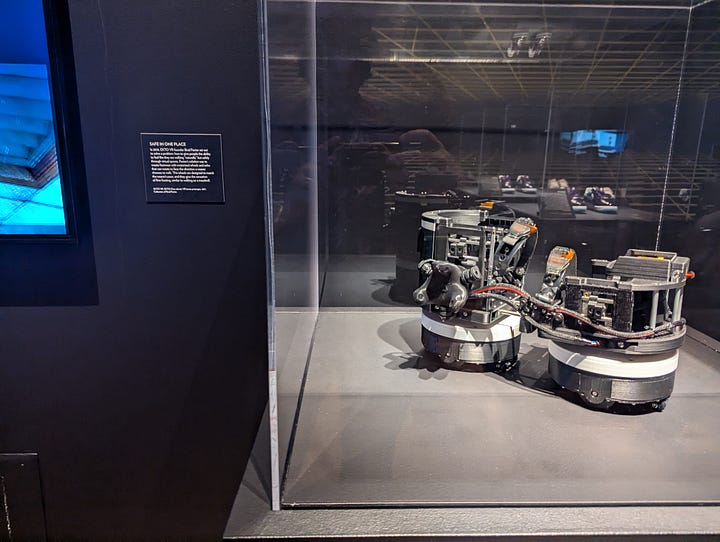
But then I stepped into the largest room, with various sneakers propped on fake rocks and hip-hop music blasting3, and suddenly the idea of the exhibit made sense. This wasn’t just about the future of sneakers, this is about the future through sneakers! Think of it as a constrained design problem, almost like playing The Thing From The Future but with one of the cards stuck: what if you were assigned to communicate elements of plausible near-term futures only using shoes people have actually made? Then you might have shoes made from reclaimed ocean garbage, 3D-printed shoes, modular shoes to allow customization and reduce waste, shoes made from mushroom fiber, shoes from a B corporation, shoes made from recycled materials, shoes made-to-order by machine, and even shoes you grow at home and then compost later4; this covers an incredibly broad range of signals about where the future is heading. Also they had two of Nike’s reissue of the self-lacing shoes from the Back to the Future sequel (one deconstructed to see the inner working), which seemed like they were supposed to be the crown jewel of the collection but didn’t do much for me5. This room on its own was worth the price of admission6, and I think it’s a great example of how to do futures work that’s relevant to a specific audience. Imagine what a similar exercise might look like in a snack food environment (kelp?), or in healthcare (at-home breathing kits for wildfire smoke days?), or in education (course snippets), and you start to see how effective these constrained exercises can be for specific audiences.
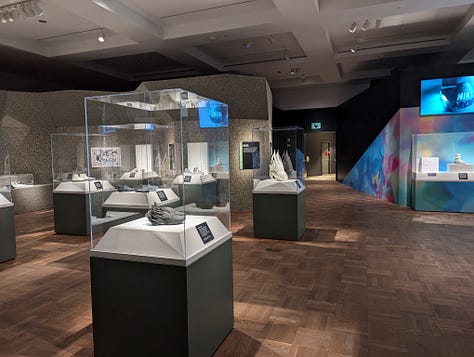
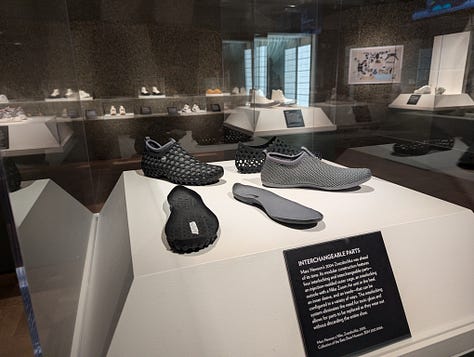

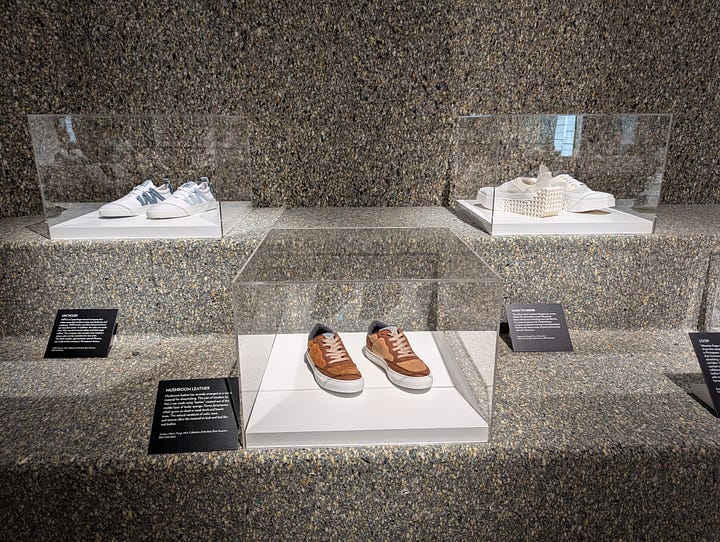
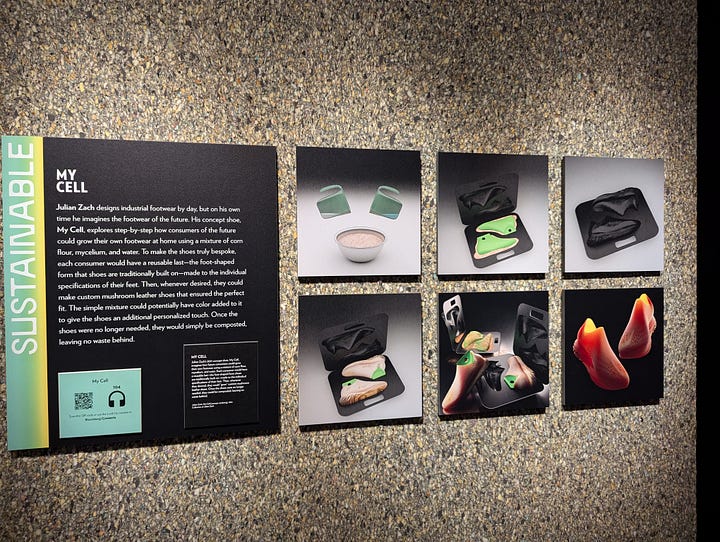

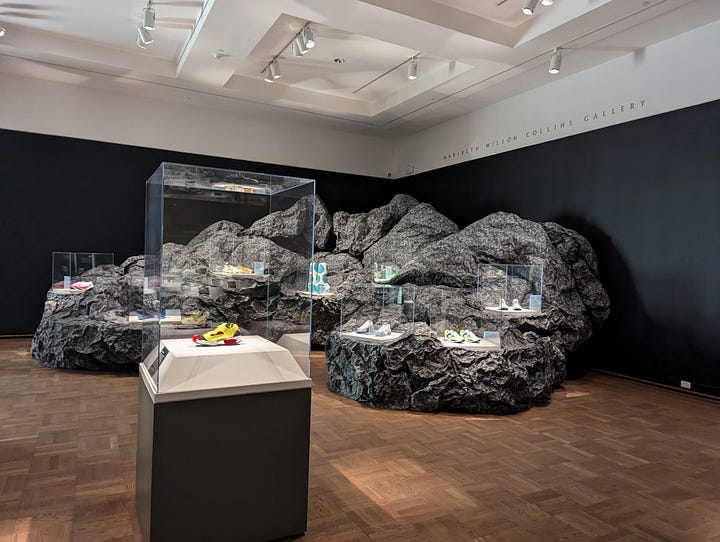
To be honest, partly because I was afraid I’d run out of material to write about by the middle of summer.
The darkest of Collapse scenarios, surely.
Blasting for a museum, so more like “profoundly audible”.
OK this last one only existed in concept form as a set of pictures on the wall.
Back to the Future Part II itself, on the other hand, might be worth an article on its own, because they designed a 30-year future based on everything being as ridiculous as possible to get a reaction out of viewers, and then it became one of the most accurate images of the future since Arthur C Clarke; a real win for Dator’s second law.
OK technically admission was free because we’re museum members, but I stopped feeling like it was a bad use of time. Also, the value was increased greatly because my 5-year-old and 7-year-old daughters decided that they were fancy ladies in this room, wandering around with aristocratic affectations, gestures, and accents commenting on all the shoes.

